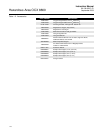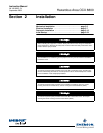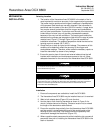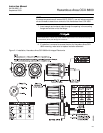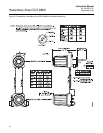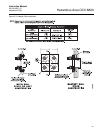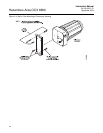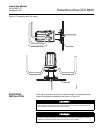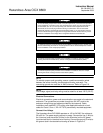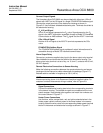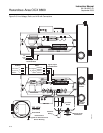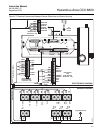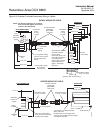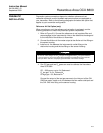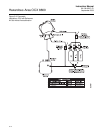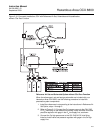
Instruction Manual
IM-106-880C, OI
September 2009
Hazardous Area OCX 8800
2-8
NOTE
To maintain proper earth grounding, ensure a positive connection exists
between the sensor housing, the electronics housing, and earth. The
connecting ground wire must be 14 AWG minimum. Refer to Figure 2-6.
NOTE
Line voltage, signal, and relay wiring must be rated for at least 105ºC (221ºF).
Electrical Connections
Electrical connections, power and communications are made to the electronic
enclosure. The connections are made through two 3/4 NPT ports in the
enclosure using fittings and cables provided by the customer. Cable
installation must meet NEC, IEC and/or other applicable national or local
codes for Class I, Zone 1, IIB +H2 T3/T6 permanently mounted equipment.
Connect Line Voltage
The Hazardous Area OCX 8800 operates on 100 to 240 VAC line voltage at
50 to 60 Hz. The power supply requires no setup. Connect the line (L wire) to
the L terminal, and the neutral (N wire) to the N terminal on the AC power
input terminal block in the electronics housing. Connect the ground (G wire) to
the ground stud in the electronics housing as shown in Figure 2-6.
To meet the Safety Requirements of IEC 1010 (EC requirement), and ensure safe operation
of this equipment, connection to the main electrical power supply must be made through a
circuit breaker (min 10 A) in close proximity and marked for this equipment which will
disconnect all current-carrying conductors during a fault situation. This circuit breaker
should also include a mechanically operated isolating switch. If not, then another external
means of disconnecting the supply from the equipment should be located close by. Circuit
breakers or switches must comply with a recognized standard such as IEC 947.
.To maintain explosion-proof protection of the OCX 8800 in hazardous areas, all cable entry
devices and blanking elements for unused apertures must be certified flameproof, suitable
for the conditions of use and properly installed.
To maintain explosion-proof protection of the OCX88C in hazardous areas, the sensor
housing must not be mounted to any surface or flange that exceeds 200ºC (392ºF).
To maintain explosion-proof protection of the OCX88C in hazardous areas, the sample
entering the sensor housing must not exceed 200ºC (392ºF).



